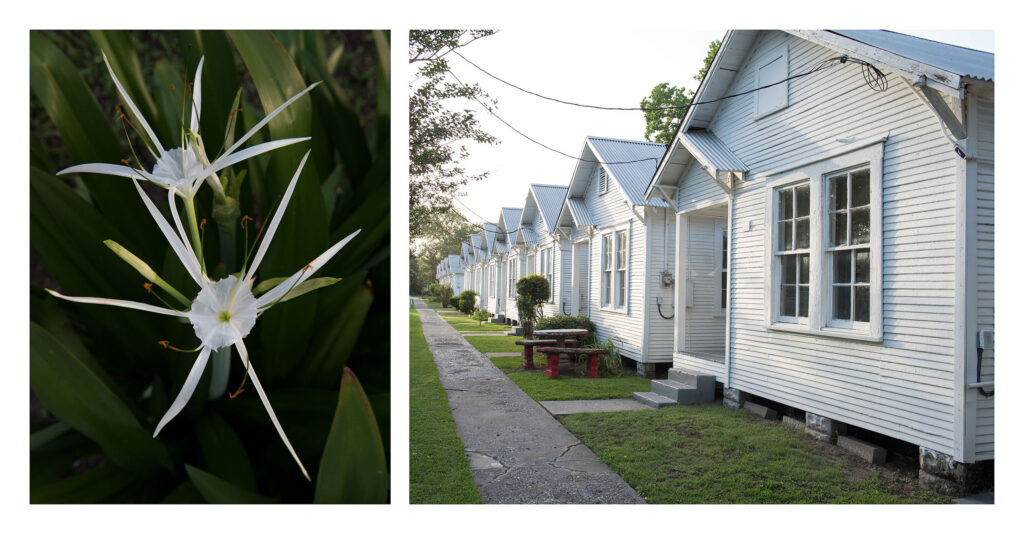Investing in Collaborative Futures-Connecting Artist Fellowships, University, and Community in Houston’s Third Ward
Sixto Wagan, Former Director of the Center for Art and Social Engagement, University of Houston
Rachel Afi Quinn, Associate Professor in Women, Gender & Sexuality Studies, and Comparative Cultural Studies
Abstract
This story outlines lessons learned from a multi-year partnership between University of Houston’s Center for Art & Social Engagement (CASE) and the community arts organization Project Row Houses (PRH), and explores its impact on artists, place-based communities, and the multiple University of Houston (UH) networks. Our case study explores some of the many ways that each cohort of artists has engaged with residents of Houston’s historically African American Third Ward, University populations, and Houston more broadly throughout a series of year-long public scholarship residencies. Beyond the immediate impact on artists and communities, our “CASE study” examines how this fellowship model for arts-based public scholarship re-frames broader UH initiatives to more fully embrace equitable community partnerships. We document the investment in long-term relational networks based on shared values with a commitment to long-term emergent outcomes. The interactive tour we provide illustrates some of that impact. Ultimately, an investment in empathy-centered methodologies and equitable partnerships throughout our fellowship process now provides us with a consistently generative model for artists, community, and university communities going forward.
Project Narratives
DEFINING THE I/WE
This is a story of five years of collaboration, thinking, and learning. Many people collaborated in the process, but the “we” at the center of the daily practice were Ryan Dennis, Project Row Houses Public Art Director (2012-2020), and me, Sixto Wagan, the Director of the Center for Art & Social Engagement at the University of Houston (2016–2021). Ryan and Project Row Houses brought community history and decades of practice. At the same time, I leveraged my experiences as an artist, producer, collaborator, and Houston arts advocate to grow the University’s commitment to new community partnerships and evaluation frameworks. We now reflect on our process of weaving together several individual stories of the multilayered impact of our project. This reflection traces only one thread of a broader network of ongoing learning and connection, but it highlights central nodes at the heart of our process.
One mile down Elgin Street from the University of Houston (UH) is Project Row Houses (PRH), a community organization located in the historically Black neighborhood of Third Ward and recognized internationally as a model for community-engaged practice. The physical distance is perhaps inversely proportional to the weight of the histories between the Tier One research institution and the community-focused Black arts organization.
In 2016, two new University initiatives set the stage for transformative relationships that would address some of these histories: The Third Ward Initiative, a multi-pronged plan through which University President Renu Khator sought to have UH “be better neighbors” to the community in which it is located; and the formation of a stand-alone College of the Arts. Simultaneously, the UH College of the Arts brought onto their faculty PRH Co-Founder Rick Lowe, whom the MacArthur Foundation had recognized for over twenty years of work in utilizing art to maintain the character and history of the Third Ward. Parallel to this, I re-envisioned the Center for Arts Leadership into the Center for Art & Social Engagement (CASE), where the new College of the Arts could explore its relationship with our local and national community through engaged research, innovative partnerships, and creating opportunities for dialogue.
THE DRIVING QUESTION
Years before the formation of the College of the Arts, Rick Lowe and Ryan Dennis engaged their national community in a brainstorming session to explore this question: How can Project Row Houses (PRH) create its ideal artist residency? They invited artists, arts professionals, academics, and community members into the same room to discuss the structure, skill-building, resources, and support systems necessary to build an artist-focused residency that engaged PRH’s communities. The formation of the UH College of the Arts and Rick’s faculty appointment created the alchemy to make a program around that guiding question.
The idea of a Katherine G. McGovern Center for the Arts–Project Row Houses (KGMCA-PRH) Fellowship program garnered a lead gift from independent philanthropist Suzanne Deal Booth that triggered University research money. And with money involved, we had to be explicit with our stakeholders — university, community, and the board levels — about how we would embark on a partnership in radical new ways. We identified the following characteristics of existing university-community partnerships: 1) The legacy of the University of Houston as a problematic partner in prior relationships with communities of color, and 2) a history of universities conducting “extractive research” in which they consume community partnerships to center the institution itself.
Instead, we sought to center expertise around community-engaged practice that already existed in Project Row Houses. We then arrived at a second guiding question: How can we connect the University, the community, and organizations in equitable ways?

PEDAGOGY THROUGH PRACTICE
We had no clear way to translate PRH’s twenty-five-year practice into an annually replicable pedagogy. Instead of focusing on teaching the Fellows a body of information, we established the following framework of shared values:
• Seeing “artists-as-researchers” and not producers requires focusing on the unique and specific guiding questions they bring that invite others into the process.
• Artists, community members, and academics are all equal in our understanding and collaboration, each bringing expertise that needs to be recognized and amplified.
• Project outcomes can never be determined or predetermined; mutual investments in artists and the community mean an iterative relationship.
With each Fellow and their individual guiding questions, we need to develop support systems. Our ongoing challenge was to upend assumptions about who holds expertise. When reflecting on her participation in the program, Fellow Carol Zou described it this way: “We need artists to create [a] blueprint for an equitable and supportive structure that they want to exist within it that is generative for them, as opposed to being exploitative and extractive, which for me, is what happens when you don’t have artists co-creating the program infrastructure.”
Focusing on the artist and community in dialog revealed research as a catalyst. Ultimately, this approach shifted power into the hands of the artist and the community, with the University there to provide resources and leverage credibility. It led us to ask: How might the Fellows’ investigations catalyze dialogue among Third Ward residents, artists, and the University community?
GROUNDING THE ARTIST IN/WITH COMMUNITY
We have invested in artists as curious researchers because we see their ideas as catalysts for dialogue and conversation. In response to community feedback, we prioritized artist fellows whose guiding questions in their research explored issues that matter to residents of the Third Ward rather than more aesthetic or esoteric inquiries. We explored how dialogue, or synthesis in creative research, could expand the possibilities for community thriving and empowerment.
As mentors, Ryan and I (joined by Sidney Garrett, PRH Program Associate) were effective at grounding the artists in a community in Houston while developing levels of accountability and agency that were different from most residency programs. Through monthly meetings and consistent check-ins with each other, we reinforced a non-extractive, empathy-centered approach. It took all of us who were part of the KGMCA-PRH Fellowship network to hold one other to those standards, as it was easy to fall prey to “normal” and “efficient” ways of working.
The Fellowship was our intentional investment in a space where artists could vision and breathe instead of producing a “final product.” One year is not enough time for Fellows to develop authentic relationships and community understanding and execute a completed product. We instead allowed artists and communities to live into creativity, compassion, and possibility.
We prioritized the Fellows’ development around the guiding questions they brought to the fellowship that expanded their artistic practice and engaged community involvement. Through these questions, we made an abstract process more concrete as multiple sectors of the community could contribute to a shared experience. The Fellows are listed below by cohort (with the Houston-based artist listed first) with the focus of their investigations, and links to their artists’ websites and lectures that make up the KGMCA-PRH Fellows Playlist:
2017 – Carrie M. Schneider’s multi-disciplinary investigation of “Where does creativity come from?” examined crisis/support dynamics, particularly informed by Hurricane Harvey.
Carol Zou focused on artists working on creative place keeping and anti-gentrification and built a learning network in Houston and nationally.
2018 – Regina Agu posed, “What role can community memory and dreaming play in reimagining Houston’s urban green spaces?” that culminated in A Psychogeographic Exploration of Emancipation Park and other urban green spaces in Houston.
Eyakem Gullilat’s initial exploration asked, “How do historically Black neighborhoods hold on to the spirit of the past from which they are forged?” Over the year, it transformed from focusing on institutional spaces to embracing “Informal Space as Everyday Urbanism.”
2019 – Libby Viera-Bland’s question, “How can design be used to increase agency in Black communities instead of limiting it?” incorporated participatory mapping exercises that inform her current position at PRH as Neighborhood Development Project Manager.
Sarah Rafael García’s listening practice was framed by asking, “Can the retelling of history and the future, from a BIPOC point of view, reclaim and reinstate historical context, current social justice narratives, and storytelling in urban neighborhoods?” ultimately allowed her to talk back to the community through a collaborative radio project and an outline and timeline for a speculative fiction work on the black and brown history in Third Ward.
2020 – José Eduardo Sánchez’s fellowship asked, “Who gets to have a place — both figuratively and literally — in Placemaking?” through making and conversations around food. Nicoletta Daríta de la Brown examined how modern society asks women, and people of color, to hold space to care for others and asked, “When do we care for ourselves?”
2021 – Shavon Morris explores through printmaking and sculpture, “How will this art help reestablish the concept of home within the community?”

WEAVING NETWORKS
We position Fellows within a network that we call the “Brain Trust” — a triad of equally paid community members who invest in and give feedback to the Fellow. Academics, community members, and other artists help the artist refine their questions, find advocates, and connect with the multiple communities that had answers to their questions. This fostered new networks of collaboration and inspired lasting relationships while creating space to amplify community members as experts.
Brain Trust members, collaborators, and advisors provided platforms for community members’ expertise to be seen and recognized by other arts professionals, students, and faculty. Through this shared viewpoint, some Third Ward Residents re-envisioned themselves as artists or stepped into the expertise they had previously claimed. As Deniz Lopez, producer of All Real Radio in Third Ward, told me:
[Sarah Rafael García] let us know about another funding opportunity out there, not even in Houston… and she was like, I recommend you, you can put me down for all these other things. And actually, I wrote that grant, and we got it. We were able to sustain during [COVID] and then even be creative and still thrive.
KGMCA-PRH Fellows would mentor a younger generation of artists each year through the PRH Summer Studios Program. Through developing a community-engaged curriculum and through continuing conversations with seven local college students over the ten-week summer program, the Fellows had the opportunity to synthesize and share their learning around community-engaged practice. Students reflected on how transformational it was to see BIPOC professionals inhabiting their power and progressive values, particularly when most art faculty in Houston are White.
Layered mentorships and intergenerational relationships of artists and community members helped to connect and challenge how some of our guiding questions could be answered.
EXPERIMENT & INVEST
The investment of the money and other resources into our fellows was a radical change of opportunity for each of them. The Fellowship was a fast track to career-long research. In Fellow Carol Zou’s words:
The artistic freedom and mentoring provided by Project Row Houses and the University of Houston College of the Arts have allowed me to germinate concepts and forms that I will be exploring for the next 10 to 20 years in my artistic practice.
Relationships and an acknowledgment of trust between the partners and Fellows, between the Third Ward community and the Fellows, and among the fellows themselves were essential to producing a catalytic opportunity. Investment in community partnership is where the greatest value lies for all involved. The Fellows repeatedly named the ways that intimate friendships within and across each cohort — at times drawing on a model of queer kinship — led to deeper and more meaningful dialogue and engagement in work. This focus on relationships meant that Fellows’ transformation in thinking and practice could occur over the long term with greater impact and sustainability.
The relational investment between KGMCA and PRH radically changed the possibilities of how the University could interact with the community. Co-learning became a rich source of transformation within the practices of UH faculty members, students, and the College itself. In “the most diverse city in the United States” — where the faculty in the College of the Arts does not reflect the diversity of the city’s population — this more equitable partnership with Project Row Houses demonstrated respect for our surrounding community.
EMERGENT OUTCOMES & THE PANDEMIC
As the partner responsible for evaluating this project, I committed the Fellowship to a learning framework rather than an evaluative framework. Like most artistic practices, we could not pre-ordain outcomes when we were committed to being present with people who were also learning and exploring. The annual evaluation of the KGMCA-PRH Fellowship Program was framed as a practice-based program assessment, starting with the individual in whom we were investing, focusing on primary domains around the Fellow’s professional, artistic, and leadership development.
In year three, we convened the Fellows to gather information about what they had begun learning over time and identify some of the emergent practices and unintended outcomes that justify our many investments. The themes of mentorship, network weaving, and relational trust emerged as key components.
After the impact of Hurricane Harvey on Houston in August 2017, we quickly understood that we needed to be more resilient and adaptive to sustain this project. With each successive weather event, we were being put to the test. When COVID-19 hit, we did not know what to do or how to engage with the community when physical proximity was literally the cause of harm.
When we selected the 2019 Fellows, we didn’t know that their guiding questions about self-care, caring for the caretakers, and food as empowerment in Black and Brown communities would have such additional resonance during a global pandemic. Their questions became a source of focus and hope in difficult times. Fellow Nicoletta Daríta de la Brown, in conversation with her cohort partner José Eduardo Sánchez, saw the need to adapt in the COVID moment and names here the challenge of shifting expectations for the KGMCA-PRH fellowship experience:
The world stopped. We then had to reset. What does it mean to be a fellow when we can’t practice the social engagement that is so crucial or critical or a core component of our practices? It’s being in public space; it’s connecting with others; it’s listening; it’s engaging. And for both of us, it’s about connection, so the disconnect was something…I had to fully process, and at times, I didn’t know how… Art is my first language, and ritual is what I do. So I was like, how do I stay present? How can I be kind? And how can I continue my research? Because the questions that I was asking were not just about a project they were more about a practice.1
Ultimately, Ryan and I learned from each other, the Fellows, and our broader community network that relational and equity-centered work takes time, requires a true interest in knowing others, and is deeply transformational. Writing our Stories of Change narrative with the support of Imagining America required that I seek recent updates from the Fellows, document their reflections on fellowship at this new moment in time, and revisit the original intentions of the partnership versus where we are today. Writing up the story has been yet another collaborative project, in conversation with UH professor and CASE advisory council member Dr. Rachel Afi Quinn.2 Through this process, we have focused on synthesizing some of what the KGMCA-PRH fellowship has taught us about the specificities of this methodology and the broad impact of a layered community-engaged approach. The KGMCA-PRH Fellowship continues with 2021 Fellow Shavon Thompson.
12020 KGMCA-PRH Fellowship: ARTIST CONVERSATION featuring: Nicoletta de la Brown & José Eduardo Sánchez, https://youtu.be/vPgp68BVXxs
2Dr. Quinn is an associate professor in the Program in Women’s, Gender & Sexuality Studies and the Department of Comparative Cultural Studies at the University of Houston. She is a lead faculty driving UH’s Imagining America campus initiative and has served as a critical collaborator for the Fellowship Program since it began. She is a former Brain Trust member and now acts as a UH contact for the 2021 Fellow.


